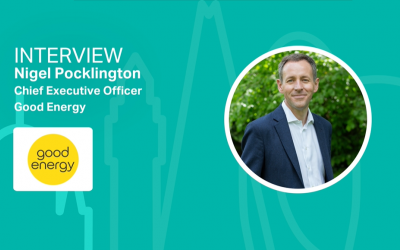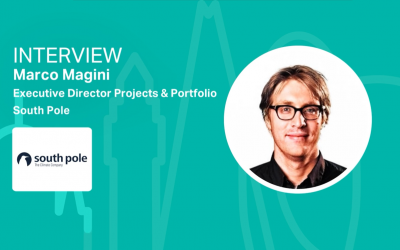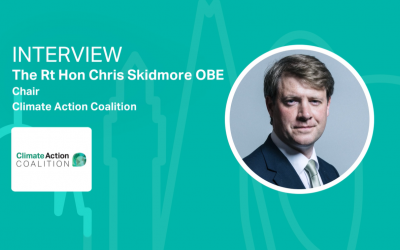Carlo Funk on how investors can overcome challenges to align with the goals of the Paris Agreement
Carlo Funk of State Street Global Advisors talks to Climate Action about how investors can overcome challenges when aligning with the objectives of the Paris Agreement.

Carlo Funk of State Street Global Advisors talks to Climate Action about how investors can overcome challenges when aligning with the objectives of the Paris Agreement.
Many pension funds and asset owners recognise climate change as one of the largest systemic risks in their investment portfolios. An increasing number have made commitments to low carbon investment, and there is significant interest in determining how investors can support the objectives of the Paris Agreement. Carlo Funk of State Street Global Advisors identifies the trends in the global response to climate change which investors will have to address.
How can investors align with the Paris Agreement’s objectives? What obstacles and challenges are your clients facing and how can these be overcome?
Clients can start to integrate climate related data points in their investment oversight and portfolio construction considerations to improve their portfolios’ carbon profile. There are, however, challenges with the knowledge around climate data and the fact that their integration has not yet reached the level of more traditional considerations in the overall market. Having said this, once understood, clients often come to the conclusions that the incorporation, if done right, can make a lot of sense.
In recognition of the severity of climate risks, countries have committed to reducing carbon emissions in line with the 2015 Paris Agreement of limiting global warming to 2° Celsius or less over the 21st century. The European Union, UK and several other countries have committed to be carbon neutral by 2050 and China also started to commit in that regard. In advance of regulation, many companies are proactively taking steps to reduce their carbon footprints and disclose their exposure to climate risks. Below are trends in the global response to climate change that investors will have to manage.
The Seismic Energy Transition- Recent years have seen a sustained shift in energy use away from fossil fuels and towards renewable energy, driven largely by acknowledgement of the impact of fossil fuel pollution and the need to reduce carbon emissions. The falling costs of solar and wind energy have further increased their attractiveness compared to fossil fuels. The COVID-19 crisis has acted to hasten the decline in fossil fuel demand and by the time the global economy recovers, it is possible that most of the growth in energy demand may be met by renewable energy sources.
The transition to a low carbon economy will require companies in all sectors to decrease their carbon footprint.
Regulatory Tipping Point- An increasing number of countries and local jurisdictions are implementing carbon pricing and emissions trading initiatives in order to reach net zero carbon emissions by 2050. The European Parliament approved the EU Taxonomy Regulation with an aim to boost private sector investment in green and sustainable projects.
Another potential driver for the increased adoption of climate considerations in investment portfolios is the perceived robustness of sustainable investment strategies. Investors are increasingly appreciating that climate risks are financial risks. Climate change is the highest priority among UN PRI signatories, representing over 3,000 investors and over $100 trillion of assets. For investors, climate change and its impact on asset valuations are becoming important criteria for investment decisions.
As a result, the world’s largest pension schemes expect to increase their allocations to climate-related index funds in upcoming years.
Appreciating that climate risks must be addressed, what should an optimal climate-aware approach look like?
Limiting carbon emissions exposure is clearly necessary but insufficient on its own. Asset owners must also build long-term resiliency into their portfolios. Resiliency is critical in a world that will be shaped by climate change for decades, perhaps even centuries, to come. We believe in an investment approach that incorporates both mitigation of greenhouse gas emissions, and adaptation to the future impacts of climate change. These are complementary approaches to reducing climate risks and correspond with asset owners’ need to balance short and long-term risks and opportunities.
Do you think the pandemic has refocused responsible investment for the better? Is there a greater focus on the S of ESG as attention had been drawn to global societal inequalities and how have investors adapted to this?
Although maybe not obvious at first sight, the crisis uncovers the importance of key ESG performance indicators for long-term value creation.
We have been long focused on social considerations when engaging with boards, including diversity on boards and in companies’ workforces. The evidence in support of greater racial and ethnic diversity in particular has become more conclusive in recent years. And, the recent protests made us acutely aware of the risks that exist for firms that don’t manage the diversity of their workforce and board effectively. This caused us to re-examine our work in this area and ensure that we were fully taking the actions that we believe are in our clients’ best long-term interest. We have designed our asset stewardship program to have a meaningful impact. Through strong engagement, voting and thought leadership, we have seen companies respond to our calls to action across a range of important topics including enhanced diversity at the board level and improved disclosure on their sustainability practices. Our Fearless Girl campaign brought gender diversity into the market spotlight, and every S&P 500 company now has at least 1 woman on its board of directors. Calling for disclosure on racial and ethnic diversity is a natural extension of our efforts on diversity, which has been our focus for many years. On that front, then Global Chief Investment Officer Rick Lacaille in August prepared a statement urging companies to articulate their diversity measures.
Have your clients adapted to meet wider stakeholder models by rethinking “S”? If so how?
The “S”, or social part, has often been perceived as rather vague and deemed insignificant by critics. This crisis proves that this perception is incorrect. Social aspects are important in the equity space and also in fixed income, where “S” has started to manifest in the creation of various kinds of “social bonds” to combat the effects of the pandemic.
A company’s resilience and contingency planning, especially in times of crisis, are crucial for its long-term performance. When considering the framework of the Sustainability Accounting Standards Board (SASB), the following are examples of material “S” issues specific to COVID-19 that can be identified:
Access & Affordability The category addresses a company’s ability to ensure broad access to its products and services, specifically in the context of underserved markets and/or population groups. It includes the management of issues related to universal needs, such as the accessibility and affordability of health care, financial services, utilities, education, and telecommunications.
Labour Practices The category addresses the company’s ability to uphold commonly accepted work standards in the workplace. It also includes minimum wage policies and provision of benefits, which may influence how a workforce is attracted, retained, and motivated. For example, flexible working hours, working from home and shift work issues were all highlighted during the pandemic.
Employee Health & Safety The category addresses a company’s ability to create and maintain a safe and healthy workplace environment that is free of injuries, fatalities, and illness (both chronic and acute). It is traditionally accomplished through implementing safety management plans, developing training requirements for employees and contractors, and conducting regular audits of their own practices as well as those of their subcontractors. The category further captures how companies ensure the physical and mental health of their workforces through technology, training, corporate culture, regulatory compliance, monitoring and testing, and personal protective equipment. For example, efforts to maintain safe workplaces and allow contactless delivery for food delivery drivers during the crisis were in focus.
As climate change is systemic, how important is it to integrate, corporate engagement, proxy voting and regulation with carbon pricing? Is transparency the key to drive real change?
Climate change presents a key systemic threat, representing both a strategic and business challenge for all companies. The prioritization of climate change as a core theme of our stewardship activities since 2014 is driven by our fiduciary obligation to maximize the long-term returns of our clients’ investments. At State Street Global Advisors, our climate stewardship approach is built around company engagement, proxy voting, thought leadership, and policy and regulatory efforts.
Climate change poses challenges to companies as they balance their strategic directions, commitments and goals. On the other hand, forward-thinking companies will have the opportunity to benefit both their reputation and their bottom line from the transition to a lower-carbon economy. Examples include companies that can develop sustainable business lines, adapt to new regulations, build strong stakeholder relationships, and improve efficiencies and cost savings.
The pandemic highlights the consequences that systemic risks can have on global financial markets and reaffirms the importance of prioritizing systemic threats, such as climate change, via our stewardship program. Our climate-related engagements have been increasing over time. We exceeded the number of climate-related engagements through the first half of the year compared with the same period in past years. This increase in engagement volume was primarily driven by the higher number of shareholder proposals related to climate.
We utilize voting and engagement as effective tools to shape climate disclosure and practices on a company-by-company basis. Certain issues, such as a universal carbon price, however, must be addressed at the market level. As the third-largest asset manager in the world, we actively participate in collaborative initiatives that help shape the policy or regulatory landscape. We have participated in the TCFD and Ceres working groups related to climate. We have also signed the Participant Statements on Climate Risk Disclosures and Carbon Pricing following the “Energy Transition and Care for Our Common Home” summit hosted by the Vatican’s Dicastery for Promoting Integral Human Development and the University of Notre Dame. Additionally, we are a founding member of the OnePlanet Initiative, which aims to accelerate the integration of climate change analysis into the management of large, long-term and diversified asset pools.






